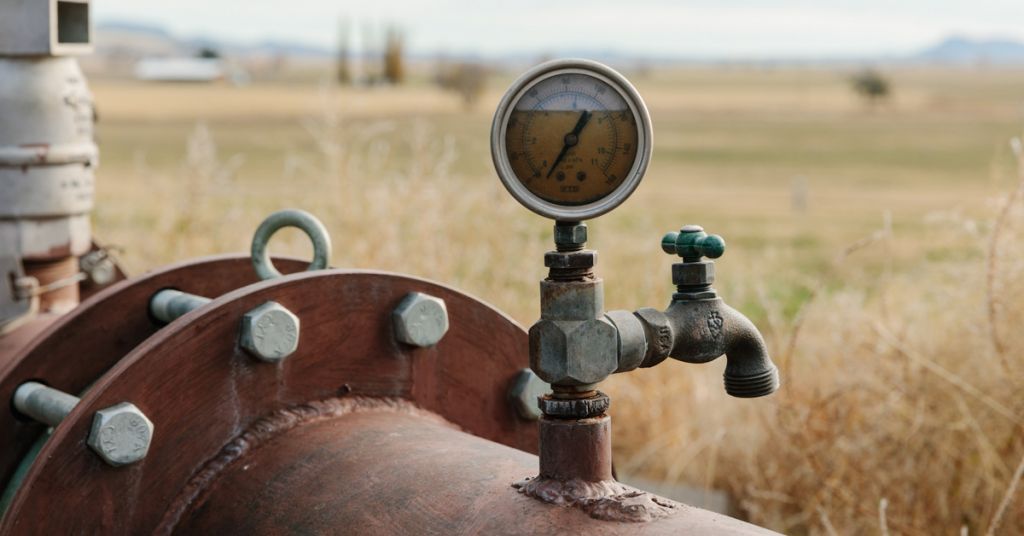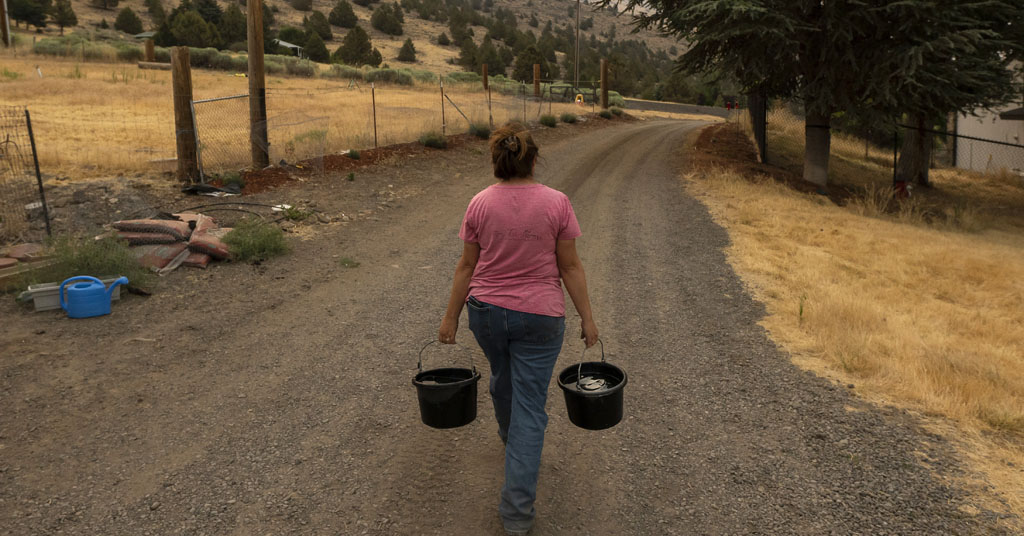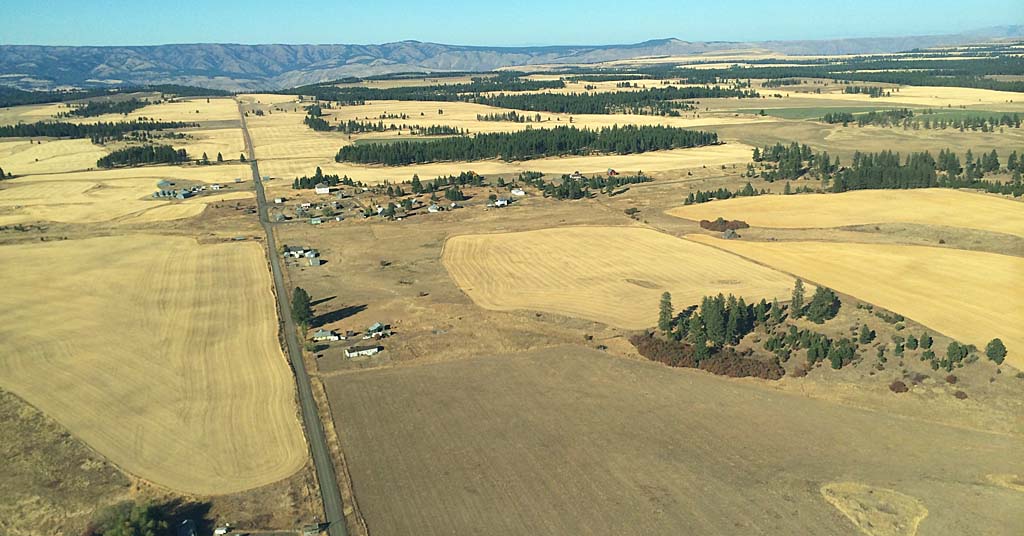By Kelsey Alsheimer. Sept. 17, 2015. In the midst of a historic drought, water resource sustainability has become a hot topic for residents, politicians, farmers and scientists. With the growth of agriculture in the Columbia Gorge, and the birth of viticulture, the future of agriculture in the area depends on Gorge farmers ability to find solutions to dwindling water resources, drought and the increasing expense of irrigation.
While many local vineyard owners are already learning to live with less water, some have been doing it for decades. The technique of dry farming–cultivating plants without irrigation–offers an answer to continuing agricultural production in an increasingly arid landscape.

[/media-credit] Analemma Winery in the winter.
For Kris Fade, owner of Analemma Winery, “Dry farming is a natural fit.” Fade’s vineyard was planted 50 years ago in White Salmon, Washington, and has been dry farmed since inception. Kris says the high elevation and greater precipitation, makes dry farming easier when paired with good soil. “The soil here is loam, ash and clay loam,” says Fade, “which has natural water holding capacity.”
Loam soils generally contain more nutrients, moisture and have better drainage and infiltration of water than other soils. Loam soils make things much better for vineyard owners like Fade, as successful dry farming comes down to a plant’s ability to root down and find water in the soil. The lack of irrigation forces Fade’s grape vines to create vast networks of roots sheltering plants from the damaging effects of droughts and disease.
Fade says that while the yield of grapes is lower in drought years, the grape’s flavors are more concentrated. “We are 3 weeks ahead of time but have riper fruit than what we typically get,” says Fade. By restricting a plant’s water intake, the fruit will contain less water and a greater density of sugar and complex flavors.
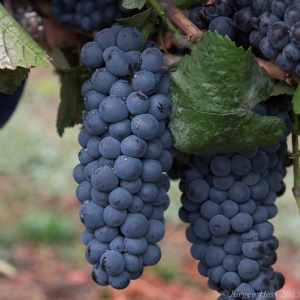
[/media-credit] Grapes hang from the vine at Mt. Hood Winery.
Stressed grapes are flavorful grapes. “In our area grapes grow vigorously,” says Mt. Hood Winery owner Steve Bickford. Bickford says that while his young grapes get some water for the first few years, there is no need to water after plants are established. “We allocate only a certain amount of water when they are young so they get deep roots,” says Bickford. “Our soil is too good for grapes.” Bickford says his vineyard has a sandy loam that holds water well. “The soil is fertile and deep. We have a milder climate so there is no need to water.”
But successful dry farming is more than just dropping a plant in the ground and hoping for the best. “You need to grow the right grape for the climate,” says Bickford.
Fade and Bickford agree that cooler climate varieties like Gewürztraminer, Pinot Noir and Chardonnay fare best in their areas which fall within the rain shadow of Mt. Hood and the Cascades.
Because of the drastic changes within this narrow space from alpine forests in the west to desert in east, a wide variety of grapes can be grown in the Gorge including warmer climate varieties like Syrah, Zinfandel and Sangiovese.
Along with growing the right grapes, best practices for dry farming include proper spacing and pruning. “If you are dry farming in a warmer area, you need a wider spacing of rows,” says Fade. For cooler climates the opposite is true. Spacing vines much more closely in cooler temperatures makes the grapes compete against each other for the available water, and reduces the yield per vine so that the clusters ripened more rapidly. A bit of competition for water is good. It may result in a lower yield, but a more flavorful grape.

[/media-credit] Steve Bickford showing off his grapes at Mt. Hood Winery.
Pruning can also give grape plants the edge on resisting drought, “We will leave the grapes bushy until the dry spells pass,” says Bickford. After that, the plants can be pruned with a mechanical hedger to stop from overgrowth and left bushy on the west side of the plant to protect them from the sun.
Besides making more flavorful grapes, dry farming is also good for the wallet. Fade speculates that in electricity alone, she probably saves over $1000 a year by not having an electric pump for irrigation. Bickford mentions that water can be taxed per acre so reducing water in any way possible saves money.
Dry farming while helping to encourage sustainable relations with the land and preserving water, still means a great deal of work. Winemakers committed to this practice generally see less profit than a winemaker who grows using drip irrigation, but for them, its quality over quantity.
“We are down in yield because we don’t have control,” says Fade, “But we have concentrated flavors and our product is better.” For Bickford, this year’s drought is nothing to worry about. “Overall we have been fine, some varieties of grape are doing better than others, but in general we have a good crop.”
2015 has been one of the driest years on record and likely won’t be the last. In a report released in August by the National Oceanic and Atmospheric Administration (NOAA), studies show for the year-to-date, most of the western states ranked in the top ten warmest category, with Oregon and Washington having the warmest August-July on record. The lack of mountain snowpack to provide spring and summer meltwater resulted in record low streamflow in the Cascades and coastal streams of Oregon and Washington, and a depleted groundwater.
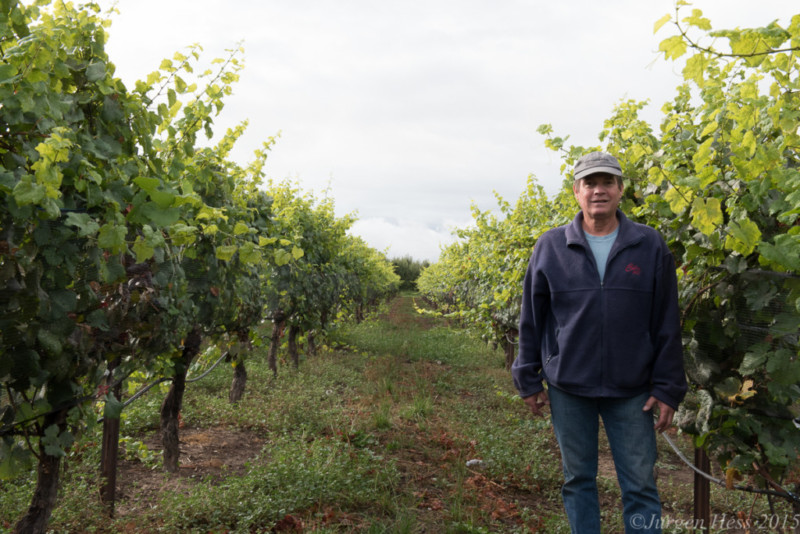
[/media-credit] Steve Bickford in his vineyard at Mt. Hood Winery.
The U.S. Environmental Protection Agency predicts that by 2100 the average temperature in the United States will increase by 4ºF to 11ºF, and extreme heat events will become more frequent.
For states like Oregon and Washington that gain significant income from agriculture, these temperatures can have devastating consequences, as agricultural uses about 85 percent of Oregon’s water and around 80 percent of water resources in Washington.
While agricultural shifts such as abandoning more water reliant plants and using cover crops to conserve the soil have already begun in response to challenging drought conditions, dry farming continues to be a viable strategy in producing wine grapes. Dry farming uses less water and produces richer, more intense, more flavorful wines. This agricultural practice may become more common in the future, when water will likely be less abundant.



